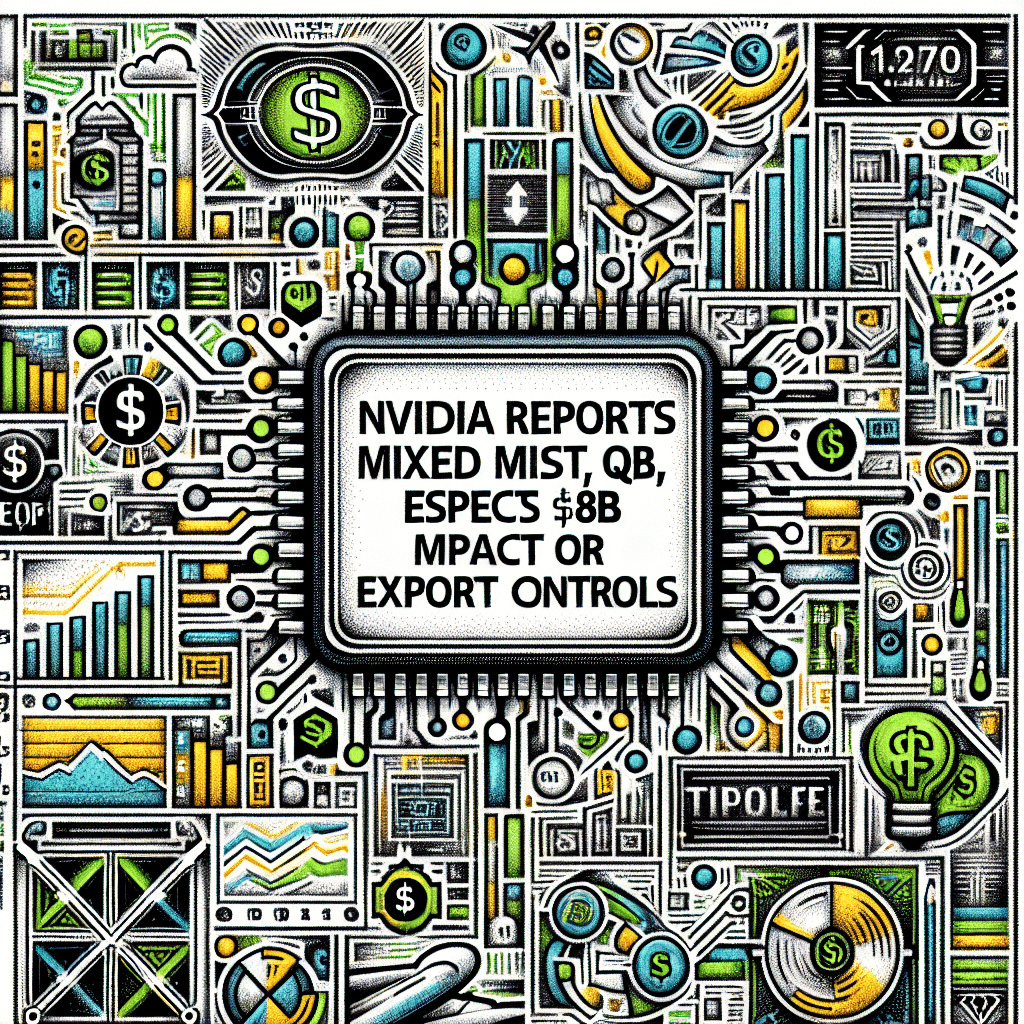Nvidia Reports Mixed Q1 Results, Expects $8B Impact from Export Controls

On May 28, Nvidia Corporation released its financial results for the first quarter of fiscal year 2026, ending April 27. The semiconductor leader reported revenue of $44.1 billion, up 12% sequentially and 69% year-over-year, outperforming consensus estimates of $42.91 billion by 2.7%. However, adjusted earnings per share came in at $0.81, missing the $0.85 Wall Street forecast, while net income rose 26% to $18.8 billion.
First Quarter Financial Highlights
- Revenue: $44.1 billion, +12% Q/Q, +69% Y/Y; beat consensus by 2.7%.
- Net income: $18.8 billion, +26% Y/Y.
- EPS: $0.81, below analyst estimate of $0.85.
- Data center revenue: $39.1 billion, +10% Q/Q; comprised 88% of total sales.
“Global demand for Nvidia’s AI infrastructure is incredibly strong,” said Jensen Huang, founder and CEO of Nvidia. “AI inference token generation has surged tenfold in just one year, and as AI agents become mainstream, the demand for AI computing will accelerate.”
Outlook and Impact of US Export Restrictions
Nvidia expects second-quarter revenue to reach approximately $45 billion, reflecting an $8 billion reduction in H200 chip sales due to recent US export control limitations. The company also took a one-time $4.5 billion charge related to compliance with new Commerce Department rules restricting high-performance AI accelerators to China.
Technical Deep-Dive: Blackwell H200 Architecture
The H200 accelerator, based on the new Blackwell architecture and manufactured on TSMC’s 4N process, features 144 streaming multiprocessors, 96 GB of HBM3e memory with up to 4 TB/s bandwidth, and delivers up to 4 petaflops of FP16 performance. Enhanced NVLink 4.0 enables multi-GPU scaling across data-center clusters. Industry analysts at Omdia note that Blackwell achieves a 2× improvement in power efficiency over its predecessor, the Ampere A100, while integrated DPX instructions accelerate transformer workloads by 30%.
Global Supply Chain and Geopolitical Implications
The export curbs underscore strategic tensions in the semiconductor supply chain. Taiwan’s TSMC continues to prioritize advanced nodes for US customers, while Chinese foundries accelerate domestic development of AI chips. South Korea’s SK Hynix has committed to increasing HBM3e packaging capacity to meet surging AI memory demand. Concurrently, the US and EU have unveiled multi-billion-dollar incentives to onshore critical chip fabrication and diversify fab locations to mitigate geopolitical risk.
Investor Outlook and Market Implications
Following the earnings release, Nvidia shares closed down 0.5% at $134.81, then rallied 4.9% in after-hours trading to $141.40. Option implied volatility spiked, reflecting elevated investor uncertainty over future export restrictions. Morgan Stanley and Goldman Sachs have maintained overweight ratings, with price targets ranging from $150 to $160, citing robust AI demand and long-term adoption of generative AI. For comparison, AMD and Intel are both accelerating their AI roadmap rollouts, targeting back-end packaging advances to close the performance gap.